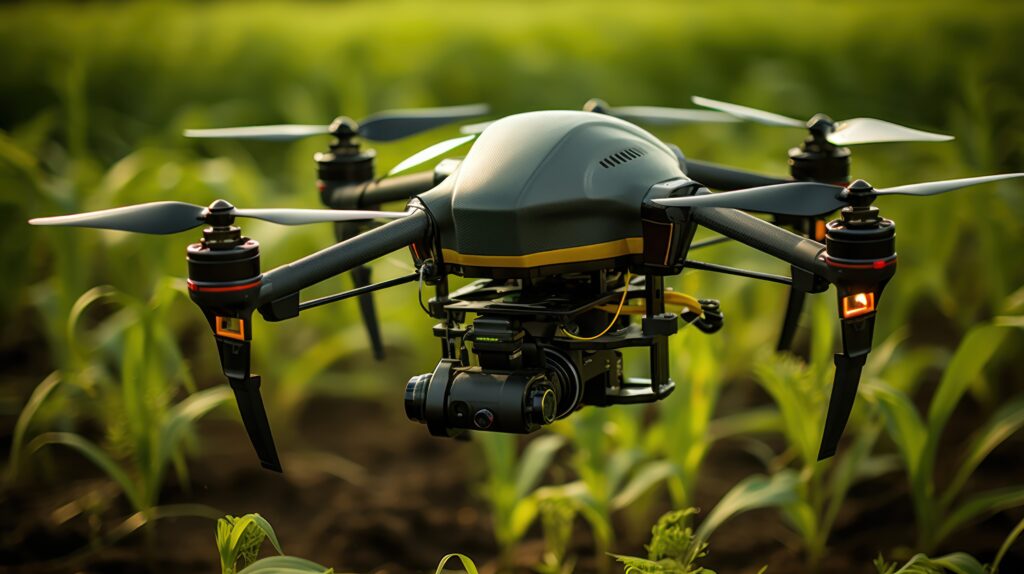Technology’s function in agriculture is becoming more and more important as it continues to change. Drone integration into farming techniques is one of the most innovative developments in recent years. The agriculture sector is undergoing a change thanks to these unmanned aerial vehicles (UAVs), which provide a host of advantages that improve productivity, sustainability, and efficiency. Drones are revolutionizing agriculture through digital transformation, transforming agricultural practices from precise crop monitoring to targeted pesticide application.
The Rise of Agricultural Drones
Agricultural drones can swiftly and precisely collect enormous volumes of data since they are outfitted with a wide range of sensors and imaging technologies. Among other things, this data may consist of thermal imaging, multispectral imaging, and high-resolution photographs. Drones with these sensors can give farmers useful information on pest infestations, soil quality, crop health, and other topics.
Drones for agriculture have a number of benefits, chief among them being the capacity to cover enormous tracts of land faster than using conventional methods. Drones’ unique ability to survey crops quickly and efficiently from the air enables farmers to make well-informed decisions in real-time.
Precision Agriculture: Optimizing Crop Management
Precision agriculture is one of the areas where drones have made the biggest contributions to agriculture. Farmers can apply more focused and effective crop management techniques by using data gathered from drones. Drones, for example, can map fields in great detail, pinpointing regions that might need more fertilizer, irrigation, or insect management.
Farmers may maximize production and minimize waste by carefully tailoring their interventions with the information at their disposal. Farmers can optimize crop yield and minimize expenses and environmental effects by distributing resources just where they are required.
Crop Monitoring and Health Assessment
In order to detect problems like nutrient shortages, disease outbreaks, and pest infestations before they get worse, crop monitoring is crucial. Farmers can identify tiny changes in plant health that may point to underlying issues by using high-resolution photographs of crops taken by agricultural drones fitted with specialized cameras and sensors.
Drones utilizing multispectral and thermal imaging technologies can detect stress factors in crops that might not be readily apparent to the human eye. Farmers can minimize crop losses and maximize potential output by addressing problems early on with proactive actions based on the analysis of this data.
Precision Pesticide Application
Historically, applying pesticides has been a labor-intensive and inaccurate procedure that frequently leads to the excess or underuse of chemicals. Precision spraying devices fitted on agricultural drones provide a more focused and effective way to apply pesticides.
Drones can minimize chemical usage and provide successful pest management by accurately regulating the dosage and distribution of chemicals. In addition to saving farmers money on inputs, this also reduces the danger of pesticide exposure posing a health risk to the environment.
Environmental Sustainability
Drone integration into farming operations has the potential to improve environmental sustainability as well. Drones can assist lessen the environmental impact of farming operations by enabling more accurate and effective resource management.
For example, farmers can decrease water usage and lower the danger of soil erosion and fertilizer runoff by optimizing irrigation operations based on data produced by drones. In a similar vein, applying pesticides selectively can lessen their negative effects on ecosystems and non-target organisms.
Challenges and Future Outlook
Drones for agriculture have many advantages, but they are not without drawbacks. Widespread adoption is nevertheless hampered by problems including data processing requirements, limited battery life, and regulatory restrictions.
However, drones have a lot of potential in agriculture as long as technology keeps developing and regulatory frameworks change. A growing part of farming’s future is expected to be played by agricultural drones thanks to continued innovation and research and development investments.
Conclusion
In conclusion, the use of drones in digital agriculture is bringing about a fundamental change in the way we work the land. Farmers may improve production, support environmental sustainability, and optimize crop management techniques by utilizing airborne data collecting and analysis. Drones have the potential to completely transform agriculture on a worldwide scale, and this potential is growing as they become more and more accessible and affordable.

